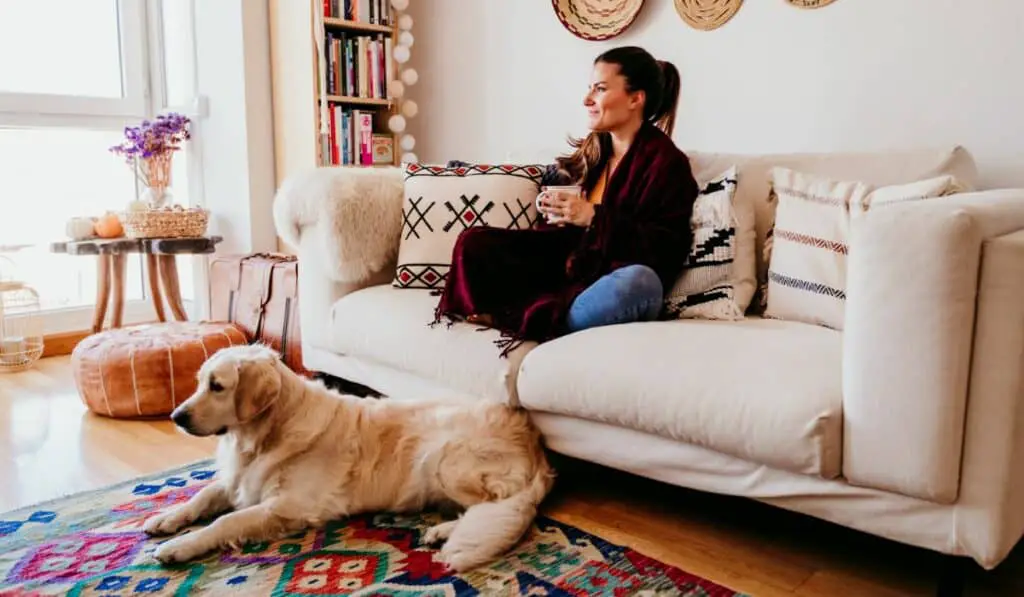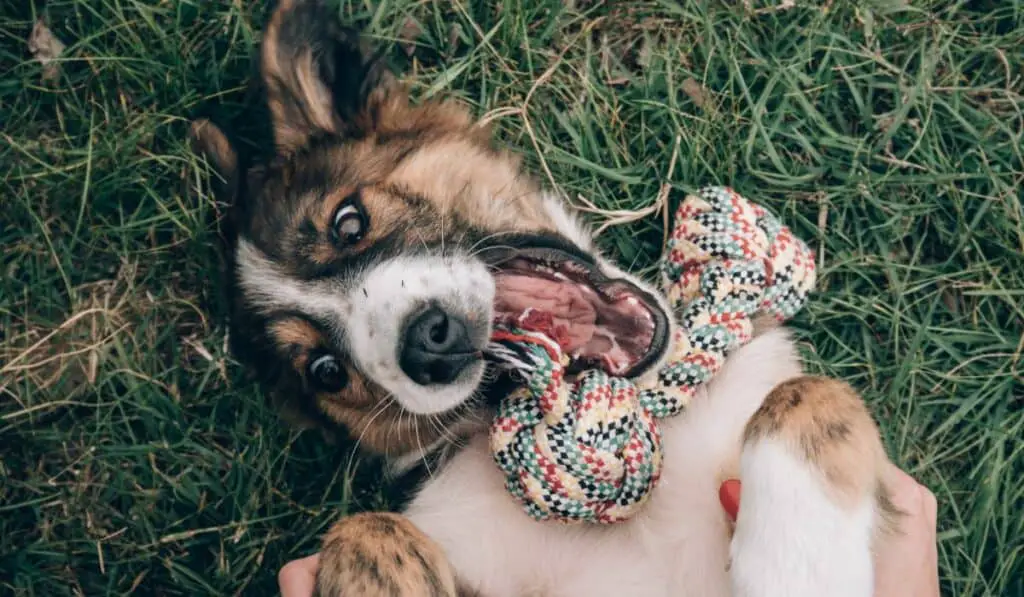Choosing the right dog breed is an important decision that requires careful consideration. Your lifestyle, living environment, and personal preferences all play crucial roles in determining which breed will best fit into your life.
Whether you’re an active adventurer, a homebody, or living in a bustling city, finding a dog that matches your needs and circumstances is essential for a harmonious and fulfilling companionship. In this guide, we’ll explore the key considerations to help you discover the best dog breed for you.
Choosing The Best Dog Breed For You
Every dog deserves love and a home. However, that doesn’t mean you should bring every dog into your household and risk neglecting them due to lifestyle differences. That said, it’s crucial to carefully evaluate your lifestyle and needs before welcoming a dog into your life.
Understanding Your Lifestyle
1. Living Space
The size of your living space plays a crucial role in deciding the right dog breed for you. Whether you reside in a city apartment or a house with a spacious yard, each setting has different requirements for the type of dog that can comfortably live there.

For apartment living, smaller breeds like French Bulldogs, Pugs, or Shih Tzus are often more suitable due to their compact size and adaptability to limited space. If you have a home with a yard, larger breeds such as Labrador Retrievers or Golden Retrievers benefit from the open space to play and exercise.
In summary, smaller breeds are better suited for confined living environments, while larger breeds thrive in homes with more space to roam.
2. Activity Level
Your activity level significantly influences the choice of dog breed that best suits your lifestyle. The time you can dedicate to outdoor activities is pivotal in making this decision. Consider below questions to determine which breed best fits your lifestyle:
- How often and for how long can you commit to daily walks?
- If you travel frequently, which breeds are adaptable to your schedule and lifestyle?
- Are you looking for a companion to join you in outdoor activities like hiking or jogging?
If you enjoy outdoor activities and exercise regularly, an active breed like an Australian Shepherds or Border Collie might be a perfect fit. These breeds thrive on physical activity and enjoy running, hiking, and playing fetch.
Alternatively, breeds like Bulldogs or Shih Tzus are perfect if you prefer a more relaxed lifestyle, as they are content with shorter walks and enjoy more downtime.
3. Family Dynamics
If you have children, it’s important to choose a breed known for being friendly and tolerant. Breeds like Golden Retrievers, Labradors, and Collies are renowned for their gentle nature and compatibility with kids.

Conversely, if you live alone or with a partner, you might consider breeds that are known for forming strong bonds with their owners, such as Shih Tzus or Cavalier King Charles Spaniels. These breeds often thrive in smaller households and develop close relationships with their human companions.
5. Allergies
One important consideration before getting a dog is determining if you or anyone in your family has allergies. Dog allergies can cause symptoms like sneezing, itching, and respiratory issues, significantly affecting your quality of life. If allergies are a concern, it might be best to avoid having dogs at home.
However, if you are set on getting a dog, consider hypoallergenic breeds like Poodles, Bichon Frises, or Portuguese Water Dogs. These breeds shed less and produce fewer allergens, making them more suitable for allergy sufferers.
Evaluating Dog Temperament and Activity Level
1. Temperament And Training
Different dog breeds have unique temperaments, making them suitable for various lifestyles. Some are easier to train and more adaptable, while others need more patience. Understanding a breed’s temperament is crucial for choosing a dog that matches your lifestyle and personality, affecting training and bonding ease.
For instance, Golden Retrievers and Labradors are friendly, loving, and family-oriented, making them ideal for households with children. They are also relatively easy to train, which is perfect for first-time dog owners.
In contrast, breeds like Dalmatians and Afghan Hounds are more independent and stubborn, requiring more patience and experience in training. These breeds can be challenging to train and may need an experienced trainer’s help. They demand more time and attention, so they might not be suitable if you can’t fully commit.

2. Energy Level
Dogs have varying degrees of energy depending on the breed. Thus, it’s essential to find a breed that matches your lifestyle and energy levels. Here’s a rough guide to evaluate the activity level of different dogs:
High-Energy Breeds
These breeds require lots of exercise and mental stimulation. Examples include Border Collies, Australian Shepherds, and Jack Russell Terriers. They thrive in active households and need ample space to run and play.
Moderate-Energy Breeds
Breeds like Labradors, Golden Retrievers, and Boxers have balanced energy levels. They enjoy regular exercise and playtime but can also relax indoors. These dogs are great for families who can provide daily walks and play sessions.
Low-Energy Breeds
Breeds such as Bulldogs, Shih Tzus, and Basset Hounds are more laid-back and require less exercise. They are well-suited for more relaxed households and can adapt to apartment living.
Breed Care and Maintenance
1. Grooming Maintenance
When choosing the best dog breed for yourself, consider the grooming needs each breed requires. Some dogs have high-maintenance coats that need regular brushing, trimming, and occasional professional grooming, while others have low-maintenance fur that requires minimal care. Understanding these grooming demands is essential to ensure you can keep your dog looking and feeling their best.
Low Grooming Breeds
Breeds like Beagles and Boxers have short coats that are easy to maintain. They require minimal brushing and occasional baths to keep their coats clean and healthy.

Moderate Grooming Breeds
Breeds such as Labradors and Golden Retrievers have medium-length coats that need regular brushing to prevent matting and reduce shedding. They may also require occasional professional grooming.
High Grooming Breeds
Breeds like Poodles and Shih Tzus have long or curly coats that need frequent brushing to prevent tangles and mats. These breeds often require regular professional grooming to maintain their coats.
2. Health Maintenance
When choosing the best dog breed for you, consider the health maintenance each breed requires. Some breeds are prone to specific health issues that may require regular vet visits, special diets, or daily medication. Understanding these needs, along with the specific health concerns of different breeds, ensures you can provide the proper care and maintain a happy, healthy life for your furry friend.
Large Breeds
Great Danes, German Shepherds, and Labradors are prone to hip dysplasia and joint problems. These breeds may require special diets, supplements, and regular vet check-ups to manage their health.
Small Breeds
Breeds like Chihuahuas and Dachshunds are less likely to develop hip dysplasia but may face issues such as dental problems or patellar luxation. Regular dental care and monitoring for mobility issues are essential for these breeds.

Brachycephalic Breeds
Breeds like Bulldogs and Pugs, known for their short noses, can suffer from respiratory problems and may need extra care in hot weather and during exercise to ensure they can breathe comfortably.
Understanding the potential health issues associated with different breeds helps you prepare for and manage your dog’s well-being, leading to a healthier and happier life for your pet.

Get the 7 Biggest Training Mistakes free report!
Cost and Commitment of Dog Ownership
Owning a dog is a serious commitment. Beyond the initial expenses of acquiring a dog, you must also be prepared for ongoing costs associated with their care. Being aware of these commitments before diving into the world of dog ownership is crucial because it directly influences your ability to provide a stable and loving environment for your pet.
To begin with, the cost of getting a dog and dog-proofing your home typically ranges around $750, varying by location and breed. Additionally, you’ll need to budget for annual expenses such as food, grooming, and routine vet visits, averaging approximately $2,489 per year according to an American Kennel Club (AKC) survey.
Unexpected costs, like emergencies or illnesses, can add up to $200 or more annually, and serious injuries or hospitalizations may exceed $500. Considering pet insurance can help mitigate these unforeseen expenses by covering a portion of medical costs.

Moreover, owning a dog demands a significant time investment for training, exercise, and companionship. Dogs have emotional needs requiring regular social interaction, mental stimulation, and affection for their well-being and happiness.
A stable financial foundation helps in fulfilling these emotional needs. It allows you to invest in quality training programs, provide stimulating toys and activities, and have access to pet daycare or dog walking services that keep your dog mentally engaged and happy.
All in all, being financially prepared ensures your dog receives comprehensive care, both physically and emotionally, fostering a happier, healthier companion.
Adopting A Dog
Rather than purchasing a dog, adopting one is often a better choice. Adoption not only saves a life but also provides a home for dogs in need. Many shelters and rescue organizations have a variety of dogs, from puppies to adults, each with their own unique stories and personalities.
Adopting an adult dog can have several advantages. Adult dogs are often already house-trained and may have some basic obedience training. Additionally, their temperament and behavior are more predictable than those of a puppy, making it easier to find a dog that fits well with your lifestyle and household.
While there may be some uncertainties with adoption, such as a lack of complete history on the dog’s past, shelters often provide thorough medical and behavioral assessments to help ensure a good match. Many shelters and rescue organizations also offer support and resources to help you and your new pet adjust during the transition period.
Moreover, adoption fees are generally lower than the cost of purchasing a dog from a breeder, and these fees usually include vaccinations, spaying/neutering, and a basic health check. This makes adoption not only a compassionate choice but also a more economical one.
Overall, adopting a dog can be an exciting and rewarding experience, offering a second chance to a deserving animal while enriching your own life with a loyal and loving companion.
Final Thoughts

Choosing the best dog breed for you involves considering your lifestyle, activity level, living situation, and personal preferences. High-energy breeds like Border Collies and Labrador Retrievers are great for active individuals who enjoy outdoor activities.
More laid-back breeds like Bulldogs or Basset Hounds are suited for those with a more relaxed lifestyle. Consider factors such as the dog’s size, grooming needs, temperament, and trainability. Additionally, think about any specific traits or characteristics that may align with your daily routine and environment.
Ultimately, the best breed for you is one that matches your lifestyle and personality, ensuring a harmonious and fulfilling companionship.
